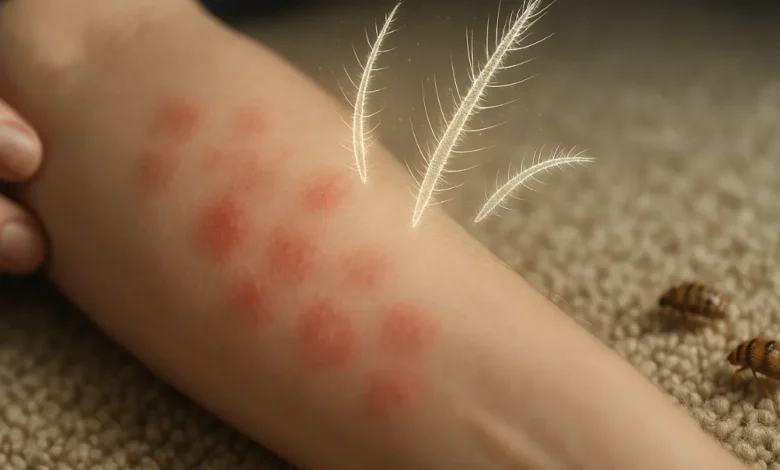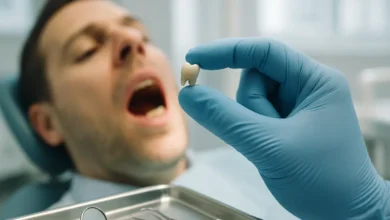Carpet Beetle Bites: Symptoms, Treatment & Prevention Guide

Carpet beetle bites aren’t true bites but allergic skin reactions to larvae hairs. Learn symptoms, treatments, and prevention tips to protect your home and skin.
Carpet beetle bites are often misunderstood, leaving many people confused about their causes, symptoms, and treatment. While these insects do not technically bite humans, their presence can still lead to irritating skin reactions that resemble bites. Understanding the difference between true insect bites and allergic responses caused by carpet beetles is essential for proper identification and care. This article explores everything you need to know about carpet beetle bites, from common symptoms to prevention strategies, in a way that is informative yet easy to read.
What Are Carpet Beetles?
Carpet beetles are small insects commonly found in homes, where they feed on natural fibers like wool, silk, fur, feathers, and even pet hair. They thrive in hidden places such as under carpets, inside upholstered furniture, or within stored clothing. Despite their tiny size, they can cause significant damage to household fabrics over time.
Unlike bed bugs or mosquitoes, carpet beetles do not bite humans to feed. Instead, their larvae are covered with tiny, hair-like bristles that can irritate human skin upon contact. These irritations are often mistaken for insect bites, leading to the term “carpet beetle bites.”
Do Carpet Beetles Really Bite?
The term “carpet beetle bites” is a misnomer. Adult carpet beetles feed on pollen and nectar outdoors and do not harm people directly. The irritation comes from the larvae stage. When larvae shed their bristly hairs, those microscopic fibers can stick to clothing, bedding, or skin.
When these hairs come into contact with human skin, they may trigger allergic reactions, red welts, and itching similar to actual insect bites. This explains why people often think they have been bitten by carpet beetles, when in reality, the irritation is more like a rash caused by skin sensitivity.
Signs and Symptoms of Carpet Beetle Bites
Skin reactions from carpet beetles can vary depending on a person’s sensitivity. Some individuals may experience no symptoms at all, while others develop noticeable skin irritation.
Common symptoms include:
- Red, itchy welts that appear similar to mosquito bites
- Small clusters of raised bumps on exposed areas of skin
- A rash that lingers for several days and may worsen with scratching
- Increased irritation at night if larvae are present in bedding or clothing
It is important to note that these reactions are not contagious. The irritation comes from exposure to the larvae’s hairs, not from an actual bite or infection.
Carpet Beetle Bites vs Bed Bug Bites
Because both pests can be found in bedrooms, carpet beetle reactions are often mistaken for bed bug bites. However, there are key differences.
| Feature | Carpet Beetle Reaction | Bed Bug Bite |
|---|---|---|
| Cause | Allergic reaction to larvae hairs | Blood-feeding insect bite |
| Appearance | Rash-like, random patches | Red welts in straight lines or clusters |
| Activity Time | More noticeable when in contact with fabrics | Usually appear after sleeping |
| Pain Level | Mild itching, sometimes mistaken for rash | Can be painful or intensely itchy |
Being able to identify these differences helps avoid unnecessary treatments for the wrong pest problem.
Why Some People React and Others Don’t
Not everyone experiences symptoms from carpet beetle exposure. Sensitivity depends largely on individual immune response. Some people may handle repeated contact with larvae hairs without irritation, while others develop rashes after minimal exposure.
Allergies often play a role as well. People with sensitive skin, asthma, or other allergic conditions may be more prone to reactions. Over time, repeated exposure can increase sensitivity, making the symptoms more severe.
How to Treat Carpet Beetle Bites
Since carpet beetles do not bite in the traditional sense, treatment focuses on soothing skin irritation rather than removing venom or stopping an insect bite reaction.
Home remedies and medical care can help, such as:
- Topical creams: Over-the-counter hydrocortisone cream reduces redness and itching.
- Antihistamines: Oral antihistamines help calm allergic responses.
- Cold compresses: Applying a cool cloth can relieve irritation.
- Moisturizers: Prevent further skin dryness and irritation.
In severe cases where rashes spread or persist, consulting a dermatologist is recommended to rule out other conditions.
Preventing Carpet Beetle Exposure
Eliminating the source of irritation is the most effective way to prevent carpet beetle bites. Regular cleaning and home maintenance are key strategies.
- Vacuum carpets, furniture, and curtains frequently to remove larvae and shed hairs.
- Wash bedding, clothing, and fabric items in hot water.
- Store seasonal clothing in sealed containers to prevent infestations.
- Inspect flowers, plants, and second-hand items before bringing them indoors, as adult beetles often hitchhike inside.
Professional pest control may be necessary for severe infestations, especially if larvae are found in multiple areas of the home.
Quotes from Experts
“Carpet beetles are not dangerous in the way bed bugs or fleas are, but their larvae can cause significant discomfort through allergic skin reactions.” – Entomology Specialist
“Prevention is always better than cure when it comes to carpet beetles. A clean, clutter-free environment makes it difficult for them to thrive.” – Pest Control Professional
Frequently Asked Questions
Do carpet beetle bites spread disease?
No. Carpet beetle reactions are not caused by bites or disease transmission. They are allergic responses to larvae hairs and are not contagious.
How long do carpet beetle skin reactions last?
Most rashes fade within a few days to a week, depending on sensitivity and treatment. Persistent symptoms may require medical attention.
Can carpet beetles live in mattresses?
Yes, larvae may hide in the seams of mattresses and bedding, though they prefer natural fibers like wool or feather-stuffed items.
Are pets affected by carpet beetles?
Pets can also be irritated by larvae hairs, especially if they sleep on infested bedding or rugs. Regular grooming and cleaning can help.
How can I tell if I have a carpet beetle infestation?
Signs include small holes in fabric, shed larval skins, and adult beetles near windows. Skin irritation without visible insects can also indicate their presence.
Conclusion
Carpet beetle bites are not true bites but allergic reactions caused by larvae hairs that irritate human skin. While they are harmless compared to blood-feeding pests, the discomfort can still be frustrating. Proper cleaning, prevention, and treatment ensure that exposure is minimized, keeping both your skin and your home free from unnecessary irritation.





